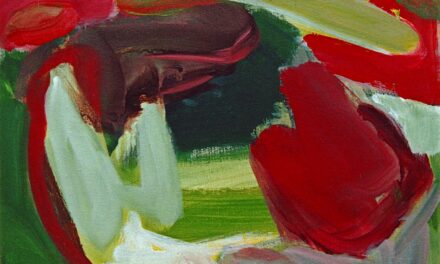New Media Art is a form of artistic expression that encompasses a broad range of digital and interactive technologies, including computer graphics, virtual reality, video art, internet art and interactive installations. This relatively recent and evolving field explores the intersection of art, technology and digital culture. New Media Art often blurs the boundaries between various artistic disciplines and challenges conventional notions of art and creativity.
It is a dynamic and innovative form of expression that embraces the possibilities offered by new technologies and the digital age. New Media Art can manifest in numerous forms, from digital paintings and sculptures to interactive installations and virtual reality experiences. It frequently involves the use of computers, software and other digital tools to create artworks that are dynamic, interactive and responsive to the viewer.
New Media Art can be experienced in various settings, including galleries, museums, public spaces and online platforms. It is a form of art that is continually evolving and pushing the boundaries of what is achievable in the digital realm.
Summary
- New Media Art encompasses artworks created using new media technologies
- New Media Art has its roots in the 1960s and has evolved alongside technological advancements
- Key characteristics of New Media Art include interactivity, participation, and the use of digital technologies
- New Media Art has had a significant impact on society, challenging traditional art forms and engaging with contemporary issues
- Different forms of New Media Art include digital art, internet art, virtual reality, and interactive installations
The History of New Media Art
The Early Experimentation
During this period, artists began to push the boundaries of traditional art forms, incorporating new technologies into their work. The use of video, computers, and other digital tools allowed artists to create innovative and interactive pieces that challenged the status quo.
The Digital Revolution
The 1980s and 1990s saw a rapid expansion of New Media Art, as advancements in computer technology and the internet opened up new possibilities for artistic expression. Artists began to create interactive installations, internet-based artworks, and virtual reality experiences that challenged traditional notions of art and engaged with the digital culture of the time. The rise of digital photography and the proliferation of personal computers also played a significant role in shaping the development of New Media Art during this period.
The Evolution of New Media Art
Today, New Media Art continues to evolve and adapt to the ever-changing landscape of technology and digital culture. As new technologies emerge, artists are finding innovative ways to incorporate them into their work, pushing the boundaries of what is possible and challenging our understanding of what constitutes art.
Key Characteristics of New Media Art

One of the key characteristics of New Media Art is its use of digital and interactive technologies to create artworks that are dynamic, responsive, and often participatory. Unlike traditional forms of art, New Media Art often invites the viewer to actively engage with the artwork, whether through interaction with a computer interface or through immersive experiences such as virtual reality. This emphasis on interactivity and participation sets New Media Art apart from other forms of art and reflects its close relationship with technology and digital culture.
Another important characteristic of New Media Art is its ability to challenge traditional notions of art and creativity. By embracing new technologies and digital tools, New Media Art pushes the boundaries of what is possible in artistic expression and opens up new avenues for creativity. Artists working in this field often explore themes related to technology, identity, surveillance, and the impact of digital culture on society.
This critical engagement with contemporary issues sets New Media Art apart as a form of art that is deeply connected to the world we live in.
The Impact of New Media Art on Society
New Media Art has had a profound impact on society by challenging traditional notions of art, engaging with contemporary issues, and pushing the boundaries of what is possible in artistic expression. Through its use of digital and interactive technologies, New Media Art has expanded the ways in which we can experience and interact with art, whether through virtual reality experiences, interactive installations, or internet-based artworks. This has opened up new possibilities for engaging with art and has helped to democratise access to artistic experiences.
Furthermore, New Media Art has played a significant role in shaping our understanding of technology and its impact on society. By critically engaging with themes related to technology, surveillance, identity, and digital culture, New Media Art has raised important questions about the role of technology in our lives and its implications for society. This has helped to spark important conversations about the ethical and social implications of new technologies, as well as the ways in which they shape our understanding of ourselves and the world around us.
Different Forms of New Media Art
New Media Art encompasses a wide range of different forms and practices, each with its own unique characteristics and possibilities. Some common forms of New Media Art include digital paintings and sculptures, interactive installations, internet-based artworks, video art, virtual reality experiences, and computer-generated imagery. Each of these forms offers different ways of engaging with technology and digital culture, whether through immersive experiences, participatory interactions, or critical engagement with contemporary issues.
Digital paintings and sculptures often involve the use of computer software to create dynamic and visually striking artworks that challenge traditional notions of painting and sculpture. Interactive installations invite viewers to actively engage with the artwork through physical interaction or through computer interfaces, creating immersive experiences that blur the boundaries between art and technology. Internet-based artworks utilise the internet as a platform for artistic expression, often engaging with themes related to online culture, social media, and digital communication.
Video art explores the creative potential of moving images and sound, often pushing the boundaries of what is possible in visual storytelling. Virtual reality experiences offer immersive environments that invite viewers to step into a digital world and engage with art in new and exciting ways.
Notable New Media Artists

Pioneers of New Media Art
Nam June Paik is often considered one of the pioneers of video art and an influential figure in the development of New Media Art as a distinct artistic movement. His use of television screens as artistic mediums challenged traditional notions of art and paved the way for new forms of artistic expression.
Pushing Boundaries of Visual Storytelling
Another notable artist is Bill Viola, whose work in video art has pushed the boundaries of what is possible in visual storytelling and has explored themes related to spirituality, human consciousness, and the passage of time. Viola’s use of technology to create immersive experiences has had a profound impact on the development of New Media Art as a form that engages with contemporary issues and challenges traditional modes of artistic expression.
Exploring Identity and Surveillance
Lynn Hershman Leeson is another influential artist who has made significant contributions to New Media Art through her use of technology to explore themes related to identity, surveillance, and the impact of digital culture on society. Her interactive installations and internet-based artworks have challenged traditional notions of art and engaged with important questions about the role of technology in our lives.
The Future of New Media Art
The future of New Media Art is likely to be shaped by continued advancements in technology and digital culture, as well as by ongoing critical engagement with contemporary issues. As new technologies emerge and evolve, artists working in this field will continue to explore new possibilities for artistic expression and push the boundaries of what is possible in art. This may involve the development of new forms of interactive installations, virtual reality experiences, internet-based artworks, and other innovative practices that engage with technology in exciting ways.
Furthermore, the future of New Media Art is likely to be shaped by ongoing critical engagement with themes related to technology, surveillance, identity, and the impact of digital culture on society. As new technologies continue to shape our lives in profound ways, artists working in this field will continue to raise important questions about the ethical and social implications of technology and its impact on our understanding of ourselves and the world around us. In conclusion, New Media Art is a dynamic and innovative form of artistic expression that embraces new technologies and challenges traditional notions of art.
It encompasses a wide range of different forms and practices, each with its own unique characteristics and possibilities. Through its use of digital and interactive technologies, New Media Art has had a profound impact on society by expanding the ways in which we can experience and interact with art, as well as by raising important questions about the role of technology in our lives. The future of New Media Art is likely to be shaped by continued advancements in technology and ongoing critical engagement with contemporary issues, as artists continue to explore new possibilities for artistic expression and push the boundaries of what is possible in art.
If you are interested in learning more about the influence of different art movements on New Media Art, you should check out the article on Pop Art on Thinkofart.com. Pop Art, with its bold colours and use of popular culture imagery, has had a significant impact on contemporary art, including New Media Art. You can read more about the history and key characteristics of Pop Art here.
FAQs
What is New Media Art?
New Media Art refers to artworks that are created using digital technology, such as computer graphics, virtual reality, and interactive installations. It encompasses a wide range of artistic practices that utilize new media technologies as a primary medium for artistic expression.
What are some examples of New Media Art?
Examples of New Media Art include digital art, internet art, video games, virtual reality experiences, interactive installations, and computer-generated music and sound art. These artworks often explore the relationship between technology, society, and human experience.
How is New Media Art different from traditional art forms?
New Media Art differs from traditional art forms in that it often incorporates digital technology, interactivity, and multimedia elements. It can exist in both physical and virtual spaces, and often challenges traditional notions of art and the role of the artist.
What are the key themes and concepts explored in New Media Art?
New Media Art often explores themes such as the impact of technology on society, the relationship between the virtual and the physical, the nature of human interaction with digital environments, and the potential of new media technologies as tools for artistic expression and social commentary.
How has New Media Art evolved over time?
New Media Art has evolved alongside advancements in technology, with artists continually pushing the boundaries of what is possible with digital tools and platforms. As technology continues to develop, New Media Art continues to adapt and innovate, reflecting the changing landscape of digital culture.




